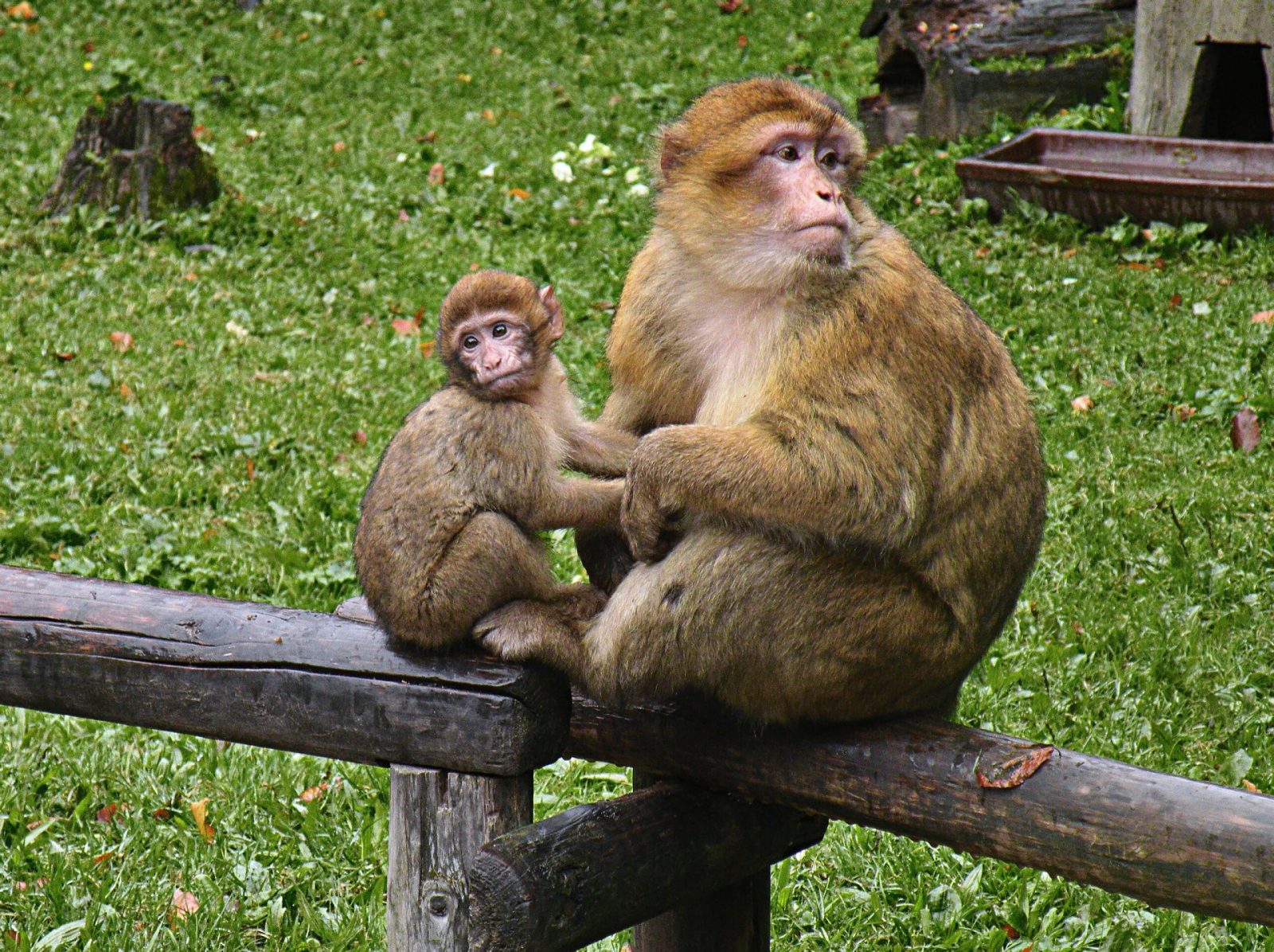Back in 2015 genetic analysis prove conclusively that a strange looking type of golden jackal in North Africa was actually and African wolf. Genetic analysis shows that is descended around...

Barbary Macaque
A wide spread species, found natively in the Atlas mountains – in the countries of Morocco, Tunisia and Algeria, there is thought to be a population of 12,000-21,000. They also have a population of around 250, in Gibraltar, and have lived there for the last 300 years, these are the only wild living population of monkeys within Europe. it should be noted that the native population appears to be growing at the moment, while the Gibraltar population is reducing gradually. In Africa, they can form tribes of up to 100 strong. The main threats appear deforestation in areas, which is fragmenting populations, and reducing areas for them to find food (grazing of cattle is also a big threat). Capture for the pet trade is also a big threat, while in Morocco they are used as photo props for tourists. Remains even over 2000 years ago, in places like Ireland, and other places in Europe suggest that they were given as diplomatic gifts.
Due to no knowledge about which young was sired by which male, the males are also involved in the child-rearing., as well as all ages. Eating vegetation and insects, males tend to live to an age of 25 years, while females can live to around 30.
Often referred to as a Barbary Ape, it is actually a true monkey (though the barbary part of its name does come from where the species originates, as this is a name for the Atlas mountains coast).
One of the earliest species to be mentioned by scientists, it is talked about by Aristotle in the 4th century BC. In the 2nd century BC, a man called Galen dissected one of these, and discovered that its body is very similar to humans. This work was so impressive, it was not until the 16th century AD that his minor mistakes were corrected.
Genetic evidence has lead scientists to find that this species is a so called sister species to other macaques, having split off before the rest. Fossils have been found of a similar creature all over Europe (including Norfolk) from several million years ago, and there is a fossil dating from perhaps as recently as 40,000 years ago from Germany.
Interestingly, this is the only Macaque species which is found outside Asia, and the only non-human primate to have lived in Europe in recent times. It is unclear when they arrived in Europe, certainly they had been in Gibraltar for centuries when the British arrived. It has been postulated that the Moors introduced them in the middle ages. They appear to be capable of surviving in many habitats, though they are often only found in specific ones, in their native range. In the Atlas mountains, they appear to prefer Cedar forests. As with other primates, grooming appears to lower stress. They make a variety of vocal calls, and appear to be able to pick out calls from their own group even in a crowd of calls.
Females appear to have a different plan in terms of getting help, by allowing every male in the group to mate with them, thereby making all males think young may be theirs. Males get the most injuries during the peak fertility period, suggesting an attempt to keep females to themselves, though this is not thought to be a good strategy, as it also stops them mating with any of the other females.
They eat a wide variety of plants, and will consume most insects worms and other creepie-crawlies.
Their predators include dogs (domestic), leopards, and a variety of eagles (depending on where in their range the Macaques are.
Below is a video on a small part of their range, which lives on the rock of Gibraltar.
Of course, this species range is also extensive in its native north Africa, and we hope to list places for you to see them here as well. Any links will appear at the bottom of the page.
Back in the early 1800s the North African wolf was defined as a separate species, why did this wild canid get redefined as a golden jackal?
- Tim
- October 16, 2020
Back in 2015 genetic analysis prove conclusively that a strange looking type of golden jackal in North Africa was actually and African wolf. Genetic analysis shows that is descended around...
Back in the early 1800s the North African wolf was defined as a separate species, why did this wild canid get redefined as a golden jackal?
- Tim
- October 16, 2020
Back in 2015 genetic analysis prove conclusively that a strange looking type of golden jackal in North Africa was actually and African wolf. Genetic analysis shows that is descended around...










